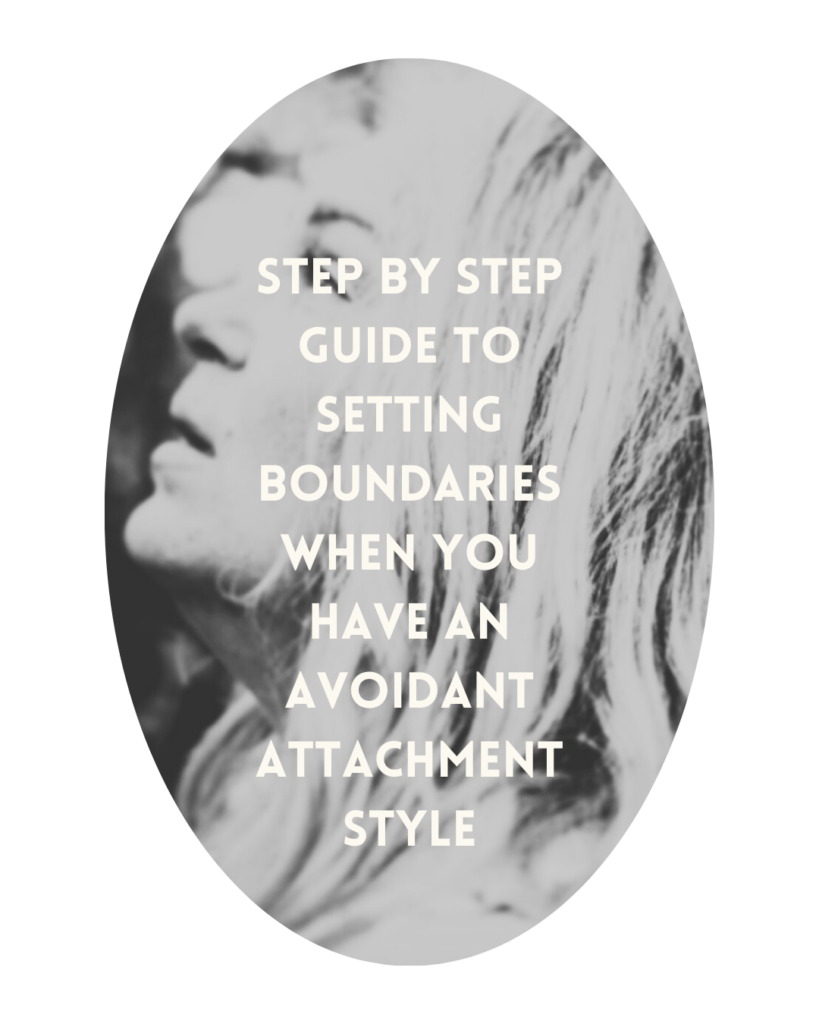© - Content and images in this blog are copyright Elise Besler of EB Voice Empowerment, unless stated otherwise. Feel free to repost or share images for non-commercial purpose, but please make sure to link back to this website and its original post.
℗ - We do not store any information about your visit to our website other than for analytics and optimization for content and reading experience through the use of cookies.
℅ - Our site does at times contain paid advertisements, sponsored content, and/or affiliate links.
Reader Etiquette
I'm your go-to expert for helping to ditch the fear and own your voice. Whether you’re speaking, singing, or setting boundaries, I help you go beyond technique -rewiring your nervous system so full expression feels natural, effortless, and so you.
Hi! I'm Elise Besler - Voice Coach & Somatic practitioner
February 12, 2025

1. Recognize When You’re Shutting Down Instead of Setting Boundaries
Avoidantly attached individuals often mistake withdrawal for boundary-setting. Pay attention to moments when you:
- Stop responding to texts instead of expressing your need for space
- Feel suffocated but don’t communicate why
- Shut down emotionally instead of voicing concerns
Instead of avoidance, try identifying what boundary would make you feel safe without disappearing.
2. Reframe Boundaries as a Tool for Healthy Independence
Rather than seeing boundaries as a way to keep people out, view them as a way to create relationships that honor your need for autonomy while allowing connection.
Try this mindset shift: “Boundaries help me stay present in relationships rather than feel the need to run.”
3. Practice Expressing Your Needs Clearly and Early
Rather than waiting until you feel overwhelmed and needing to withdraw completely, start setting small, clear boundaries upfront. Examples include:
- “I need a quiet night to recharge, but I’d love to connect tomorrow.”
- “I prefer to process things alone first before talking about them.”
- “I value our time together, but I also need personal space to feel balanced.”
Setting expectations early prevents misunderstandings and reduces the urge to disconnect abruptly.
4. Build Tolerance For The Discomfort of Vulnerability
Sharing your needs might feel uncomfortable or even unsafe, but vulnerability is a muscle that strengthens over time. Instead of defaulting to withdrawal, try small acts of emotional openness, such as:
- Expressing when something upsets you instead of ignoring it
- Letting someone know when you appreciate them
- Asking for support in a way that feels manageable
Building emotional tolerance helps make healthy connection feel less threatening.
5. Use Boundaries to Create Predictability, Not Distance
For avoidant individuals, unpredictability in relationships can feel overwhelming. Boundaries can create a sense of structure and safety, making intimacy easier to navigate.
Consider setting routine-based boundaries such as:
- Scheduling alone time in relationships so you don’t feel drained
- Setting expectations for communication frequency
- Being upfront about emotional capacity so you don’t overcommit
When relationships feel more predictable, the urge to disengage suddenly decreases.
6. Learn to Identify Secure vs. Unhealthy Boundaries
Avoidant individuals may create overly rigid boundaries that block connection instead of fostering healthy space. Ask yourself:
- Healthy boundaries: “Am I setting this boundary to support my well-being?”
- Avoidant boundary: “Am I setting this boundary to avoid discomfort or emotional closeness?”
A secure boundary respects both your independence and your partner’s need for connection.
7. Regulate Your Nervous System to Support Boundary-Setting
As an anxiously attached person, your nervous system may go into overdrive when setting boundaries. Learning to regulate your body’s response can make boundary-setting feel safer and more natural.
Try these techniques:
- Daily Glimmer Practice – Paying attention to glimmers (the opposite of triggers) in your day to day can anchor your nervous system in feelings of safety ~ this helps with speaking up and setting boundaries.
- Body awareness – Notice physical sensations when discomfort arises and gently soothe yourself.
- Grounding techniques – Use sensory experiences (like touching something textured or listening to calming sounds) to bring yourself back to the present.
- Movement – Gentle movement like stretching or walking can help release pent-up anxiety.
A regulated nervous system makes it easier to communicate boundaries without feeling triggered.
The Long-Term Benefits of Setting Boundaries
By practicing healthy, flexible boundaries, you will:
- Feel more in control of your emotional responses
- Experience deeper, more fulfilling relationships without feeling trapped
- Reduce the need to withdraw or disappear when stressed
- Build emotional resilience instead of relying solely on independence
- Create secure, predictable relationship patterns
Setting boundaries doesn’t mean giving up your need for space ~ it means creating relationships that feel both connected and safe.
Final Thoughts
Setting boundaries as an avoidantly attached person requires a balance between honoring your independence and allowing connection. The key is learning to express your needs before feeling overwhelmed, instead of withdrawing completely.
— If you’ve ever struggled to speak up, felt your voice shake in high-stakes moments, or questioned if your words truly mattered, this practice is for you! —
Click HERE for immediate access to the FREE “Find Your Voice” Guided Audio Training.
Take 11 minutes to activate the power of your voice with this guided practice. Includes: Grounding, breath-work and voice-work exercises to help you regulate your nervous system and build a confident voice.

Leave a Reply Cancel reply
Grab
THE "Find YOUR VOICE" AUDIO TRAINING
Welcome, Friend! Around here, we believe that embodiment is sacred, and that every voice deserves to take up space.
This is a space rooted in anti-racism, body liberation, queer-affirming practices, and a commitment to trauma-aware, nervous system-informed growth.